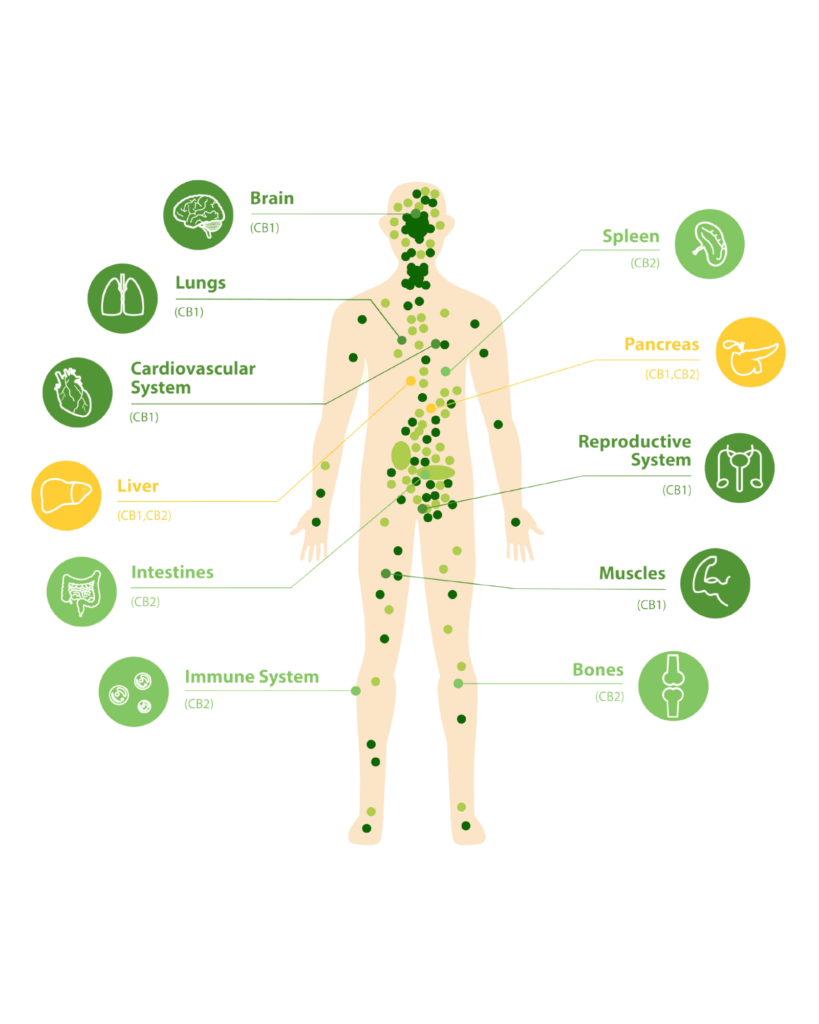About Cannabinoids
Cannabinoids are natural compounds found in the Cannabis sativa plant. Out of more than 400 plant-derived chemicals, over 100 are classified as cannabinoids. These compounds play a role in how the body responds to internal signals and outside influences. Cannabinoids connect with a system in the body called the endocannabinoid system, which helps maintain internal balance.
The endocannabinoid system
The endocannabinoid system plays an important role in helping the body stay steady and well-regulated. It has three key parts: endocannabinoids, receptors, and enzymes.
Endocannabinoids are made by the body. These natural compounds are similar to those found in cannabis plants. Two of the most well-known are anandamide and 2-arachidonoylglycerol, also known as 2-AG. These molecules carry messages throughout the body.
The receptors in this system sit on the outside of many cells. When endocannabinoids connect with them, a change happens inside the cell. The most common receptors are CB1 and CB2. CB1 is mostly found in the brain and spine. CB2 is more common in immune cells and other body tissues.
When the body needs to communicate something, it releases endocannabinoids to reach these receptors. After the message is passed on, enzymes break them down so that the signal does not go on too long.
In short, the endocannabinoid system helps manage how the body responds to things like mood, sleep, hunger, pain, and the immune system by sending and clearing signals as


Phytocannabinoids
Phytocannabinoids are natural substances found in cannabis plants. They are made in small glands on the plant called trichomes. These compounds do not mix with water, but they can be absorbed through oils or alcohol.
Cannabis contains hundreds of different compounds, with about 66 recognized as cannabinoids. One of the most well-known is delta 9 tetrahydrocannabinol, or THC, which can cause psychoactive effects. Others, like cannabidiol (CBD) and cannabinol (CBN), act differently in the body.
Cannabinoids are grouped by their chemical structure. These groups include cannabigerols, cannabichromenes, cannabidiols, tetrahydrocannabinols, and cannabinols.
THC interacts with both CB1 and CB2 receptors and may support pain relief. CBD does not cause a high and often blocks CB1 activity. CBN is studied for its role in easing symptoms like anxiety and inflammation. CBG also does not affect the mind and may act on CB1 in a similar way.
To put it simply, phytocannabinoids are plant-based compounds that interact with the body in different ways. While THC can cause a high, others like CBD and CBN may support certain responses without affecting mental clarity.
